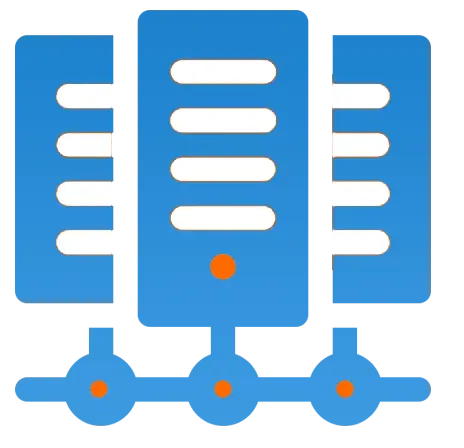Get 69% Off on Cloud Hosting : Claim Your Offer Now!
- Products
-
Compute
Compute
- Predefined TemplatesChoose from a library of predefined templates to deploy virtual machines!
- Custom TemplatesUse Cyfuture Cloud custom templates to create new VMs in a cloud computing environment
- Spot Machines/ Machines on Flex ModelAffordable compute instances suitable for batch jobs and fault-tolerant workloads.
- Shielded ComputingProtect enterprise workloads from threats like remote attacks, privilege escalation, and malicious insiders with Shielded Computing
- GPU CloudGet access to graphics processing units (GPUs) through a Cyfuture cloud infrastructure
- vAppsHost applications and services, or create a test or development environment with Cyfuture Cloud vApps, powered by VMware
- Serverless ComputingNo need to worry about provisioning or managing servers, switch to Serverless Computing with Cyfuture Cloud
- HPCHigh-Performance Computing
- BaremetalBare metal refers to a type of cloud computing service that provides access to dedicated physical servers, rather than virtualized servers.
-
Storage
Storage
- Standard StorageGet access to low-latency access to data and a high level of reliability with Cyfuture Cloud standard storage service
- Nearline StorageStore data at a lower cost without compromising on the level of availability with Nearline
- Coldline StorageStore infrequently used data at low cost with Cyfuture Cloud coldline storage
- Archival StorageStore data in a long-term, durable manner with Cyfuture Cloud archival storage service
-
Database
Database
- MS SQLStore and manage a wide range of applications with Cyfuture Cloud MS SQL
- MariaDBStore and manage data with the cloud with enhanced speed and reliability
- MongoDBNow, store and manage large amounts of data in the cloud with Cyfuture Cloud MongoDB
- Redis CacheStore and retrieve large amounts of data quickly with Cyfuture Cloud Redis Cache
-
Automation
Automation
-
Containers
Containers
- KubernetesNow deploy and manage your applications more efficiently and effectively with the Cyfuture Cloud Kubernetes service
- MicroservicesDesign a cloud application that is multilingual, easily scalable, easy to maintain and deploy, highly available, and minimizes failures using Cyfuture Cloud microservices
-
Operations
Operations
- Real-time Monitoring & Logging ServicesMonitor & track the performance of your applications with real-time monitoring & logging services offered by Cyfuture Cloud
- Infra-maintenance & OptimizationEnsure that your organization is functioning properly with Cyfuture Cloud
- Application Performance ServiceOptimize the performance of your applications over cloud with us
- Database Performance ServiceOptimize the performance of databases over the cloud with us
- Security Managed ServiceProtect your systems and data from security threats with us!
- Back-up As a ServiceStore and manage backups of data in the cloud with Cyfuture Cloud Backup as a Service
- Data Back-up & RestoreStore and manage backups of your data in the cloud with us
- Remote Back-upStore and manage backups in the cloud with remote backup service with Cyfuture Cloud
- Disaster RecoveryStore copies of your data and applications in the cloud and use them to recover in the event of a disaster with the disaster recovery service offered by us
-
Networking
Networking
- Load BalancerEnsure that applications deployed across cloud environments are available, secure, and responsive with an easy, modern approach to load balancing
- Virtual Data CenterNo need to build and maintain a physical data center. It’s time for the virtual data center
- Private LinkPrivate Link is a service offered by Cyfuture Cloud that enables businesses to securely connect their on-premises network to Cyfuture Cloud's network over a private network connection
- Private CircuitGain a high level of security and privacy with private circuits
- VPN GatewaySecurely connect your on-premises network to our network over the internet with VPN Gateway
- CDNGet high availability and performance by distributing the service spatially relative to end users with CDN
-
Media
-
Analytics
Analytics
-
Security
Security
-
Network Firewall
- DNATTranslate destination IP address when connecting from public IP address to a private IP address with DNAT
- SNATWith SNAT, allow traffic from a private network to go to the internet
- WAFProtect your applications from any malicious activity with Cyfuture Cloud WAF service
- DDoSSave your organization from DoSS attacks with Cyfuture Cloud
- IPS/ IDSMonitor and prevent your cloud-based network & infrastructure with IPS/ IDS service by Cyfuture Cloud
- Anti-Virus & Anti-MalwareProtect your cloud-based network & infrastructure with antivirus and antimalware services by Cyfuture Cloud
- Threat EmulationTest the effectiveness of cloud security system with Cyfuture Cloud threat emulation service
- SIEM & SOARMonitor and respond to security threats with SIEM & SOAR services offered by Cyfuture Cloud
- Multi-Factor AuthenticationNow provide an additional layer of security to prevent unauthorized users from accessing your cloud account, even when the password has been stolen!
- SSLSecure data transmission over web browsers with SSL service offered by Cyfuture Cloud
- Threat Detection/ Zero DayThreat detection and zero-day protection are security features that are offered by Cyfuture Cloud as a part of its security offerings
- Vulnerability AssesmentIdentify and analyze vulnerabilities and weaknesses with the Vulnerability Assessment service offered by Cyfuture Cloud
- Penetration TestingIdentify and analyze vulnerabilities and weaknesses with the Penetration Testing service offered by Cyfuture Cloud
- Cloud Key ManagementSecure storage, management, and use of cryptographic keys within a cloud environment with Cloud Key Management
- Cloud Security Posture Management serviceWith Cyfuture Cloud, you get continuous cloud security improvements and adaptations to reduce the chances of successful attacks
- Managed HSMProtect sensitive data and meet regulatory requirements for secure data storage and processing.
- Zero TrustEnsure complete security of network connections and devices over the cloud with Zero Trust Service
- IdentityManage and control access to their network resources and applications for your business with Identity service by Cyfuture Cloud
-
-
Compute
- Solutions
-
Solutions
Solutions
-
 Cloud
Hosting
Cloud
Hosting
-
 VPS
Hosting
VPS
Hosting
-
GPU Cloud
-
 Dedicated
Server
Dedicated
Server
-
 Server
Colocation
Server
Colocation
-
 Backup as a Service
Backup as a Service
-
 CDN
Network
CDN
Network
-
 Window
Cloud Hosting
Window
Cloud Hosting
-
 Linux
Cloud Hosting
Linux
Cloud Hosting
-
Managed Cloud Service
-
Storage as a Service
-
 VMware
Public Cloud
VMware
Public Cloud
-
 Multi-Cloud
Hosting
Multi-Cloud
Hosting
-
 Cloud
Server Hosting
Cloud
Server Hosting
-
 Bare
Metal Server
Bare
Metal Server
-
 Virtual
Machine
Virtual
Machine
-
 Magento
Hosting
Magento
Hosting
-
Remote Backup
-
 DevOps
DevOps
-
 Kubernetes
Kubernetes
-
 Cloud
Storage
Cloud
Storage
-
NVMe Hosting
-
 DR
as s Service
DR
as s Service
-
-
Solutions
- Marketplace
- Pricing
- Resources
- Resources
-
By Product
Use Cases
-
By Industry
- Company
-
Company
Company
-
Company
The rise of deepfake technology and its potential impact on cybersecurity
Table of Contents
“In September 2019, AI firm Deeptrace identified 15,000 deepfakes online, marking a significant surge within a span of just ten months.”
In recent years, the proliferation of deepfakes has escalated, exemplified by several prominent instances that underscore their capacity for disinformation and manipulation of public opinion.
For instance, incidents include fabricated videos of Barack Obama insulting Donald Trump, falsified remarks from Mark Zuckerberg claiming control over vast amounts of stolen data, and a digitally altered apology by Jon Snow for the divisive conclusion of Game of Thrones. Notably, a large majority of deepfakes—approximately 96%—are pornographic in nature, with nearly 99% involving facial swaps with adult film actors.
These developments have sparked widespread concern among experts regarding the cybersecurity implications of deepfakes. They have the potential to deceive individuals and organizations alike, disrupt digital systems, and erode trust in information. This article delves into the rise of deepfakes and deep fake cybersecurity and explores strategies to mitigate these risks, particularly through cloud security.
Benefits of Deepfake Technology:
| Deepfake Technology Benefits | Description |
|---|---|
| Entertainment | Enables realistic digital content creation for movies, gaming, and entertainment, enhancing visual effects. |
| Education | Facilitates immersive learning experiences through historical recreations or language translation applications. |
| Training and Simulations | Allows for realistic training scenarios in various fields like healthcare, defense, and crisis management. |
| Creative Content | Enables innovative storytelling and creative expression for artists, filmmakers, and content creators. |
| Special Effects | Enhances special effects in filmmaking, enabling cost-effective production and improved visual experiences. |
Let’s Understand What are deepfakes
Imagine you’re having a business video chat with someone who is not in the same city as you. You’re talking about sensitive things, like launching a new product or sharing financial reports that are not yet public. It seems like everything is flowing smoothly, and you realize that you are familiar with the person you are conversing with. You might have met them before, and they look and sound like you expect them to.
But what if you get to know the person you’re talking to is actually someone else and pretending to be your colleague or partner? This is where deepfakes come in.
Deepfakes are a type of scam, it is a synthetic media that uses artificial intelligence to make it look and sound like someone is saying or doing something that they’re not. One of the most common uses of deepfakes is to create videos of public figures, such as politicians, celebrities, or business leaders, saying or doing things that they never actually did.
The purpose behind using deepfakes is to shame or blackmail someone or sharing sensitive information that could harm them. Being mindful of this form of fraudulent activity and implementing safeguards to safeguard oneself is crucial.
The potential impact of deepfakes on cybersecurity
Cybersecurity professionals are already grappling with data breaches, ransomware attacks, and phishing scams. Recently, another growing threat has kept them awake at night — the rise of the deepfake has raised a number of concerns about their potential impact on cybersecurity.
Some of the key risks associated with deepfakes include:
Deception and fraud
One of the primary risks associated with deepfakes is that they can be used to deceive individuals or organizations. For example, a deepfake video of a company executive could be used to manipulate stock prices or to gain access to sensitive information. Similarly, a deepfake video of a politician could be used to manipulate election results or to spread false information about a particular candidate.
Disinformation and propaganda
Deepfakes can also be used to spread disinformation and propaganda, which can have serious implications for national security and global stability. For example, deepfakes could be used to create fake news stories or videos that are designed to influence public opinion or to sow discord in political or social systems.
Reputation damage
Deepfakes pose another potential danger by being able to harm the reputation of individuals or organizations. For example, a deepfake video of a celebrity could be used to create a false narrative about their behavior, which could lead to public backlash and damage to their reputation.
Misuse of personal information
Deepfakes can also be used to manipulate or misuse personal information, which can have serious consequences for individuals. For example, deepfakes could be used to create fake social media profiles or to impersonate individuals online, which could lead to identity theft or harassment.
How do you spot a deepfake?
Deepfakes are manipulated media that use AI and ML to create convincing but false audio or video. Here are some ways to spot a deepfake:
Look for inconsistencies
Deepfakes often have inconsistencies, such as mismatches in lighting, shadows, or angles. For example, the lighting on a person’s face may not match the lighting in the background, or their facial features may not align properly with their body.
Pay attention to the audio
Deepfakes can be created using AI-generated voices or by manipulating existing audio. Listen carefully for any irregularities or inconsistencies in the voice or background noise.
Check for unnatural movements
In some deepfakes, the movements of a person’s face or body may look unnatural or jerky. The presence of this characteristic may indicate that the video has undergone some form of alteration.
Consider the context
The creation of deepfakes is frequently motivated by malicious intentions, such as disseminating false information or manipulating the opinions of the general public. If a video or audio clip seems too sensational or out of character for the person it features, it may be a deepfake.
Use technology
There are a number of tools available that can help you detect deepfakes, including software that can analyze videos frame by frame or detect inconsistencies in the audio. Nonetheless, these tools may not be entirely reliable and ought to be employed in conjunction with other means of identification.
Mitigating the risks of deepfakes
There are a number of steps that can be taken to mitigate the security risks of deepfakes. Some of the most effective strategies include:
Educating the public
One of the most important steps in mitigating the risks of deepfakes is to educate the public about their potential impact. This includes raising awareness of the risks associated with deepfakes, as well as providing individuals with the tools and resources they need to identify and report deepfakes when they encounter them.
Developing detection tools
Another important step in mitigating the risks of deepfakes is to develop effective detection tools. These tools can be used to identify deepfakes and to prevent them from spreading. For example, some organizations are developing software that uses AI to detect and analyze deepfakes, which can help to identify and remove them from social media platforms and other online channels.
Regulating deepfakes
Regulation is another potential strategy for mitigating the risks of deepfakes. For example, some countries are considering laws that would make it illegal to create or distribute deepfakes without the consent of the individuals depicted in them. These laws could help to deter the creation and dissemination of deepfakes, and could provide individuals with legal recourse if they are targeted by deepfake attacks.
Developing AI defenses
AI is both the enabler and the defense against deepfakes. Research is underway to use AI to detect deepfakes, and to create AI-driven anti-deepfake systems. However, as AI systems are becoming more complex and sophisticated, so are the deepfakes. Therefore, it is important to continue to improve AI systems in order to stay ahead of the curve.
Conclusion
The stark reality is that the technology behind creating deepfakes is progressing more rapidly than the technology used to detect them. This presents a significant threat to both corporations and society as a whole. It is crucial for individuals, cloud security organizations, and governments to address these risks, especially in light of concerns such as deep fakes backup, deep fake attack examples, and deep fake cybersecurity.
Achieving this requires a united effort from all stakeholders: technology companies, researchers, policymakers, and the general public. By collaborating effectively, we can establish a comprehensive approach to deepfakes that maximizes their potential benefits while minimizing the associated risks.
Recent Post

Stay Ahead of the Curve.
Join the Cloud Movement, today!
© Cyfuture, All rights reserved.
Send this to a friend

 Pricing
Calculator
Pricing
Calculator
 Power
Power
 Utilities
Utilities VMware
Private Cloud
VMware
Private Cloud VMware
on AWS
VMware
on AWS VMware
on Azure
VMware
on Azure Service
Level Agreement
Service
Level Agreement 


















